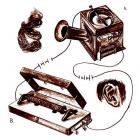One hundred and fifty years after the invention of the telephone, the telephone network with its million of intricate connections has become the largest technical system in the world. Its basic infrastructure is still used in more recent methods of communication such as the Internet. In regions where telephone cables have not yet been installed, people are connected via modern mobile networks. As a result, nearly 60 percent of all mobile-phone users live in developing countries. In these regions, the mobile phone has spread further than any other high-tech communication tool. This is an example of “leap-frogging,” skipping a developmental step and directly implementing the most current and innovative technology—an idea that could also be applied to other systems, such as energy resources or mobility within a region. For instance, many countries could adapt their economic development by building industries powered by sustainable and eco-friendly energy sources, skipping the use of fossil fuels entirely.

Philipp Reis’ telephone
Anders Emil Sommerfeldt
Philipp Reis’ telephone
Anders Emil Sommerfeldt
Drawn by Anders Emil Sommerfeldt , 2014.  This work is licensed under a Creative Commons Attribution-NonCommercial-NoDerivatives 4.0 International License.
This work is licensed under a Creative Commons Attribution-NonCommercial-NoDerivatives 4.0 International License.
The horse doesn’t eat cucumber salad: Developing the telephone
Text and images by Anders Emil Sommerfeldt
University of the Arts (UdK), Berlin
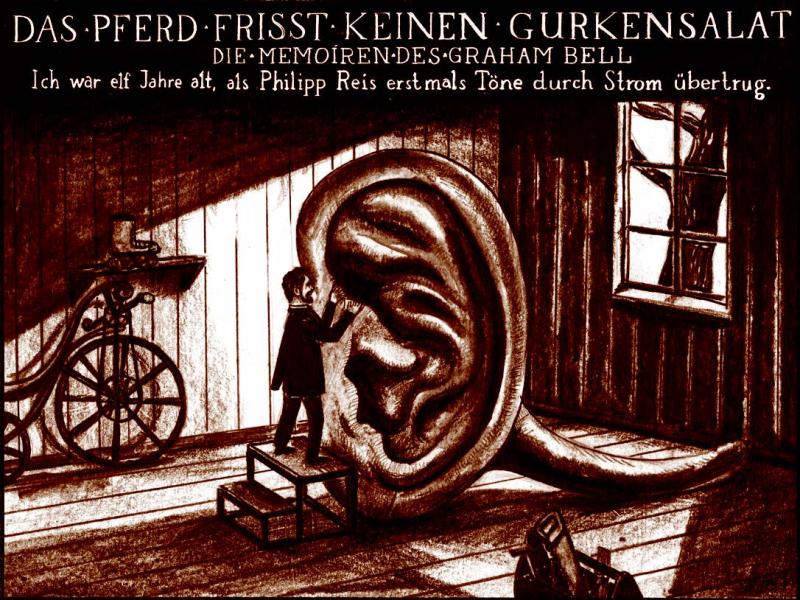
The horse doesn’t eat cucumber salad.
The memoirs of Graham Bell.
I was eleven years old when Philipp Reis first transmitted those words through a cable.
The horse doesn’t eat cucumber salad.
The memoirs of Graham Bell.
I was eleven years old when Philipp Reis first transmitted those words through a cable.
Drawn by Anders Emil Sommerfeldt , 2014.  This work is licensed under a Creative Commons Attribution-NonCommercial-NoDerivatives 4.0 International License.
This work is licensed under a Creative Commons Attribution-NonCommercial-NoDerivatives 4.0 International License.
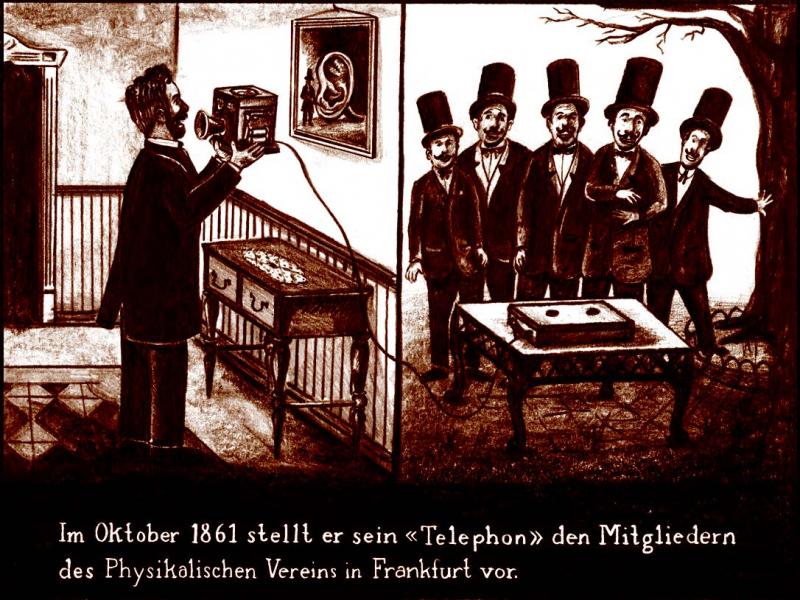
In October 1861 he presented his “telephone” to the members of the physics association in Frankfurt.
In October 1861 he presented his “telephone” to the members of the physics association in Frankfurt.
Drawn by Anders Emil Sommerfeldt , 2014.  This work is licensed under a Creative Commons Attribution-NonCommercial-NoDerivatives 4.0 International License.
This work is licensed under a Creative Commons Attribution-NonCommercial-NoDerivatives 4.0 International License.

Four years later I held such a device in my hands and had a vision. Improvements still needed to be made, of course.
Four years later I held such a device in my hands and had a vision. Improvements still needed to be made, of course.
Drawn by Anders Emil Sommerfeldt , 2014.  This work is licensed under a Creative Commons Attribution-NonCommercial-NoDerivatives 4.0 International License.
This work is licensed under a Creative Commons Attribution-NonCommercial-NoDerivatives 4.0 International License.

But that was to be done for me by others. The first to make improvements to Reis’s telephone was the theater mechanic Antonio Meucci. He, too, had successfully worked on a long-distance speaking device.
But that was to be done for me by others. The first to make improvements to Reis’s telephone was the theater mechanic Antonio Meucci. He, too, had successfully worked on a long-distance speaking device.
Drawn by Anders Emil Sommerfeldt , 2014.  This work is licensed under a Creative Commons Attribution-NonCommercial-NoDerivatives 4.0 International License.
This work is licensed under a Creative Commons Attribution-NonCommercial-NoDerivatives 4.0 International License.
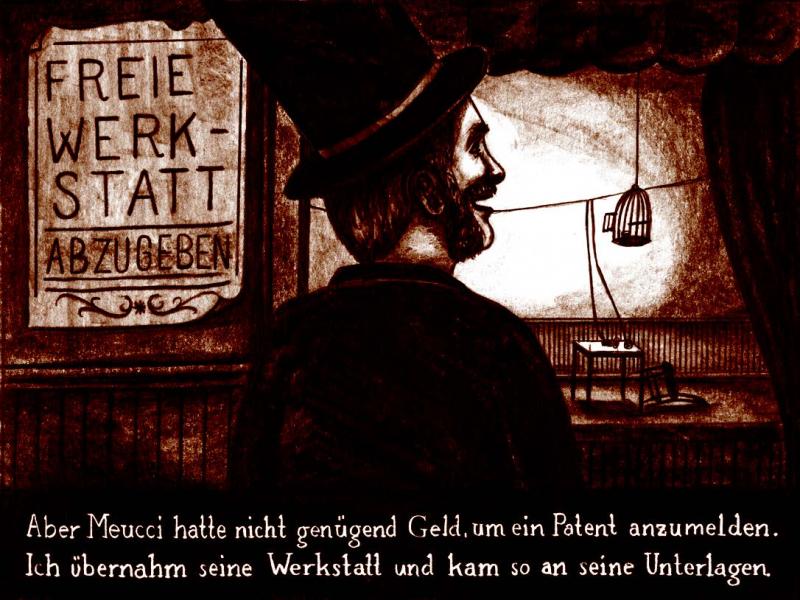
Independent Workshop for Sale
But Meucci didn’t have enough money to apply for a patent. I took over his workshop and that’s how I got access to his research documents.
Independent Workshop for Sale
But Meucci didn’t have enough money to apply for a patent. I took over his workshop and that’s how I got access to his research documents.
Drawn by Anders Emil Sommerfeldt , 2014.  This work is licensed under a Creative Commons Attribution-NonCommercial-NoDerivatives 4.0 International License.
This work is licensed under a Creative Commons Attribution-NonCommercial-NoDerivatives 4.0 International License.
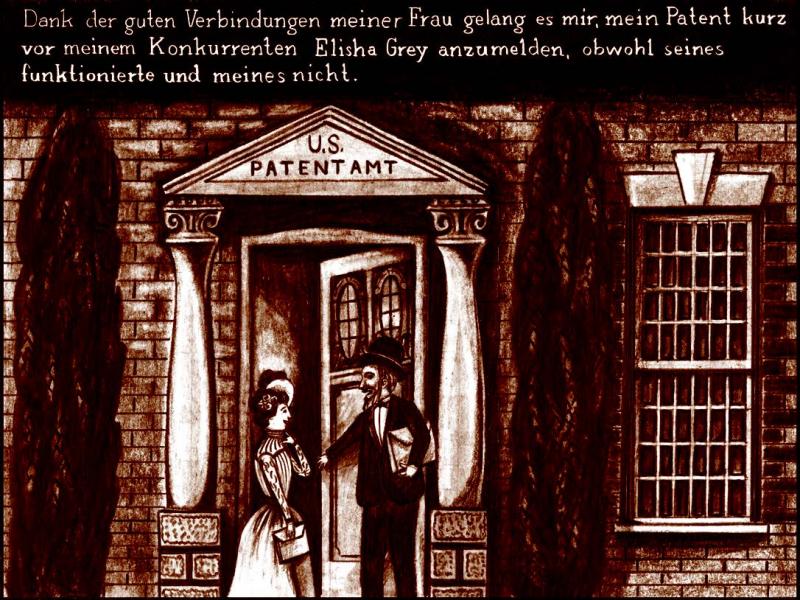
Then, thanks to my wife’s connections, I was able to apply for my patent right before my competitor, Elisha Grey, even though his model was working at the time and mine was not.
Then, thanks to my wife’s connections, I was able to apply for my patent right before my competitor, Elisha Grey, even though his model was working at the time and mine was not.
Drawn by Anders Emil Sommerfeldt , 2014.  This work is licensed under a Creative Commons Attribution-NonCommercial-NoDerivatives 4.0 International License.
This work is licensed under a Creative Commons Attribution-NonCommercial-NoDerivatives 4.0 International License.
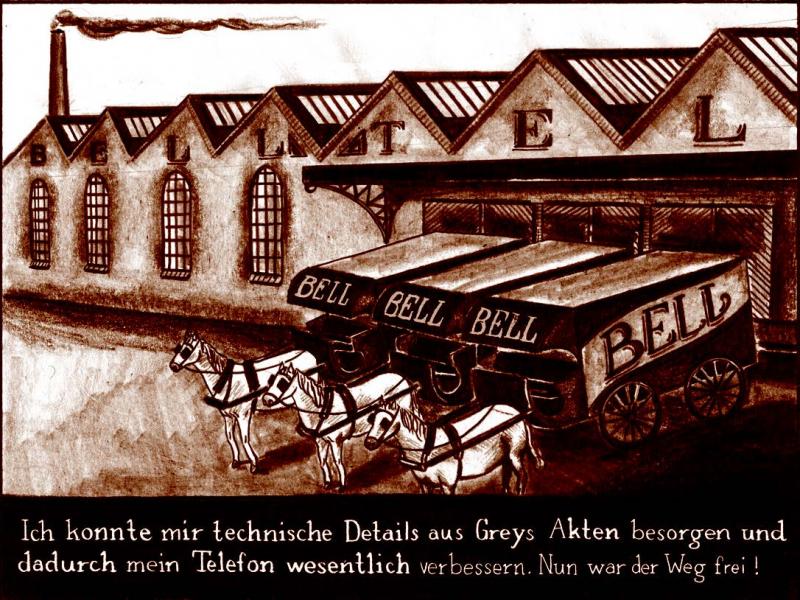
I was able to get technical details from Grey’s files, and using them, improve my telephone dramatically. The path was cleared!
I was able to get technical details from Grey’s files, and using them, improve my telephone dramatically. The path was cleared!
Drawn by Anders Emil Sommerfeldt , 2014.  This work is licensed under a Creative Commons Attribution-NonCommercial-NoDerivatives 4.0 International License.
This work is licensed under a Creative Commons Attribution-NonCommercial-NoDerivatives 4.0 International License.

Today, my telephone network spans the entire world. I may not have been the first, but I was the best!
Today, my telephone network spans the entire world. I may not have been the first, but I was the best!
Drawn by Anders Emil Sommerfeldt , 2014.  This work is licensed under a Creative Commons Attribution-NonCommercial-NoDerivatives 4.0 International License.
This work is licensed under a Creative Commons Attribution-NonCommercial-NoDerivatives 4.0 International License.
Author’s comment:
When I was first assigned the task of creating a comic about the telephone, I was surprised by one name: It was not Alexander G. Bell who invented the telephone but Philipp Reis—10 years earlier! How could this happen? I knew I had to find the reason and what I found out became the basis for my comic.
How to cite
Sommerfeldt, Anders Emil. “Telephone.” Environment & Society Portal, Multimedia Library, 2014. http://www.environmentandsociety.org/node/6641/.
The comic also appears in Alexandra Hamann, Reinhold Leinfelder, Helmuth Trischler, and Henning Wagenbreth, eds., Anthropozän – 30 Meilensteine auf dem Weg in ein neues Erdzeitalter. Eine Comic-Anthologie (Munich: Deutsches Museum, 2014).
This work is licensed under a Creative Commons Attribution-NonCommercial-NoDerivatives 4.0 International License.


